
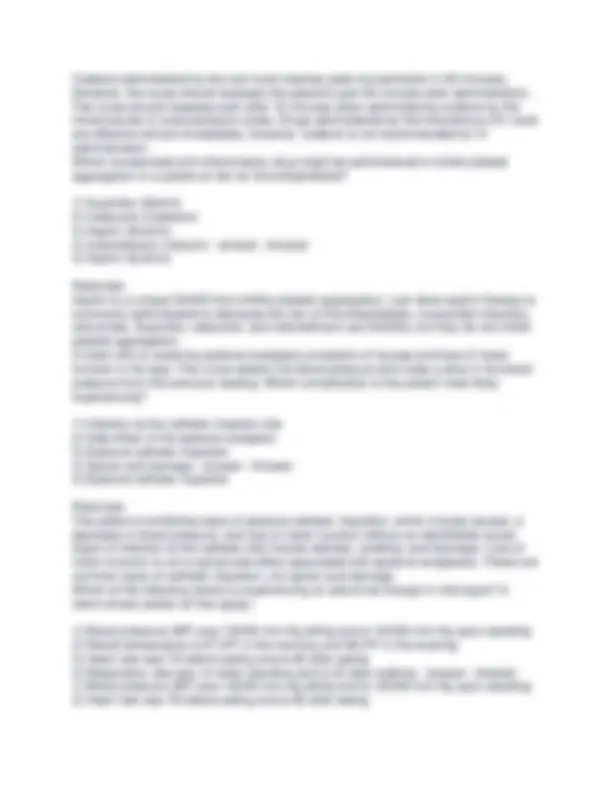
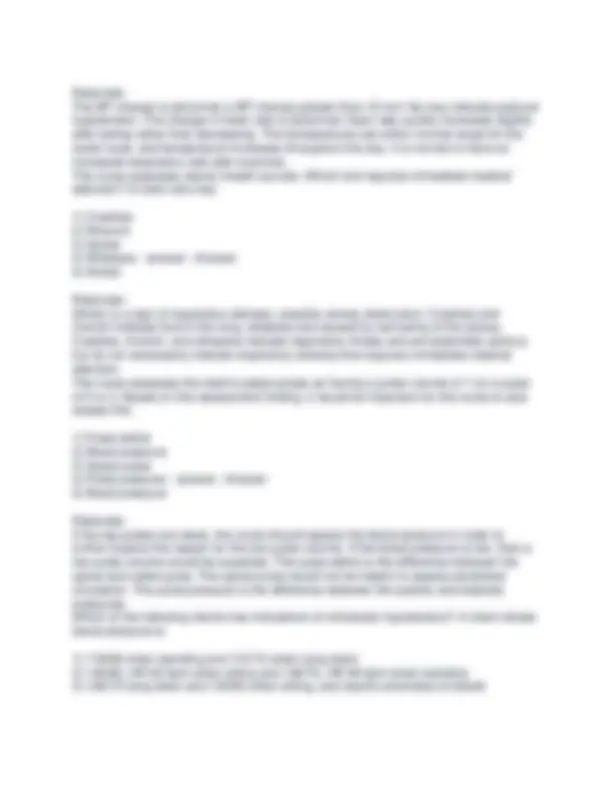
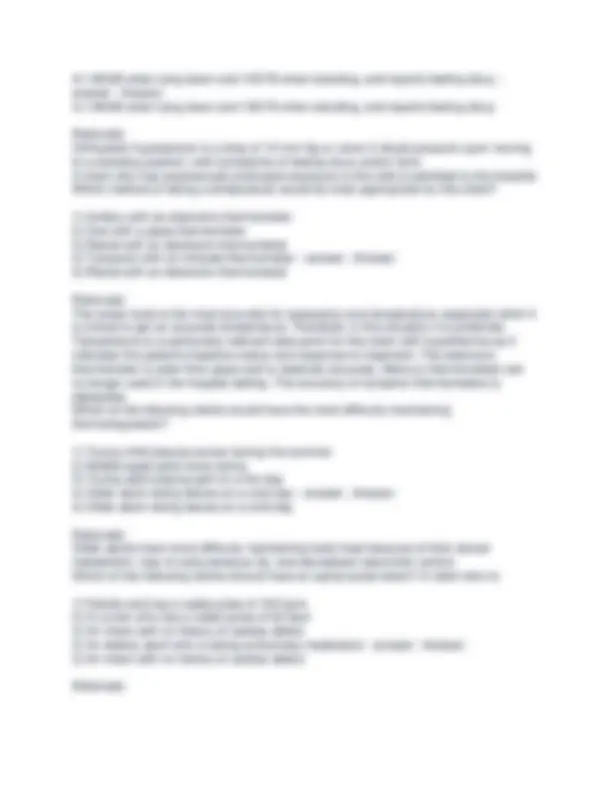
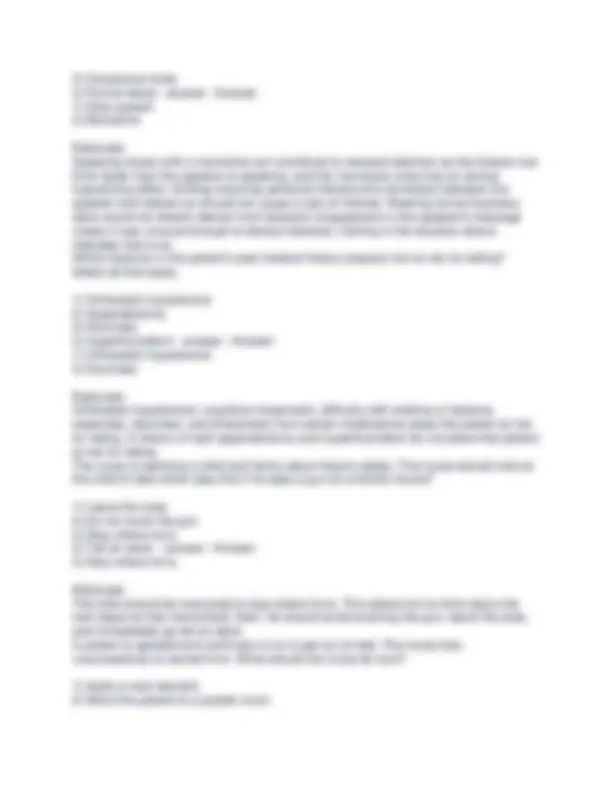
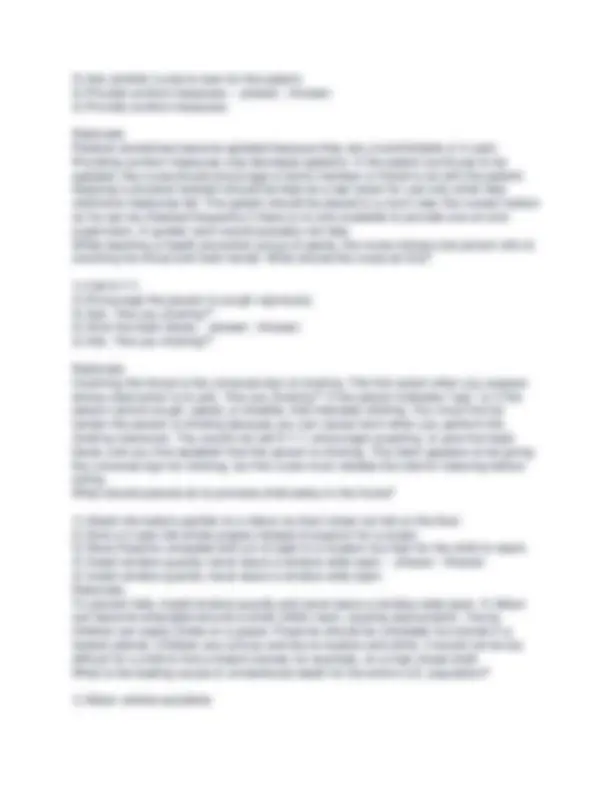
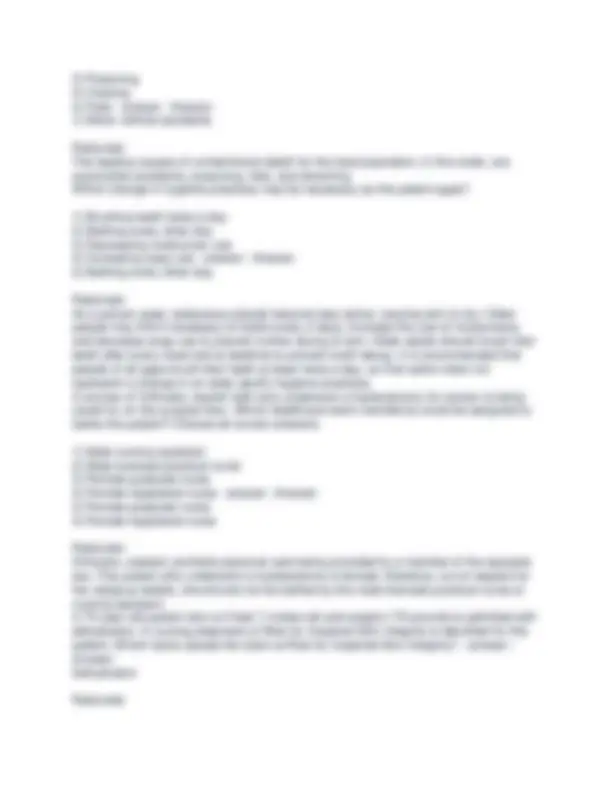
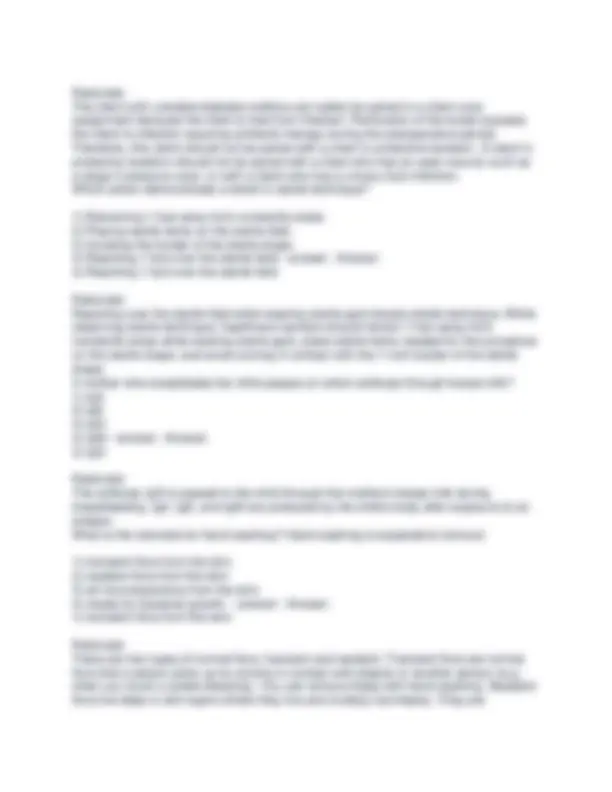
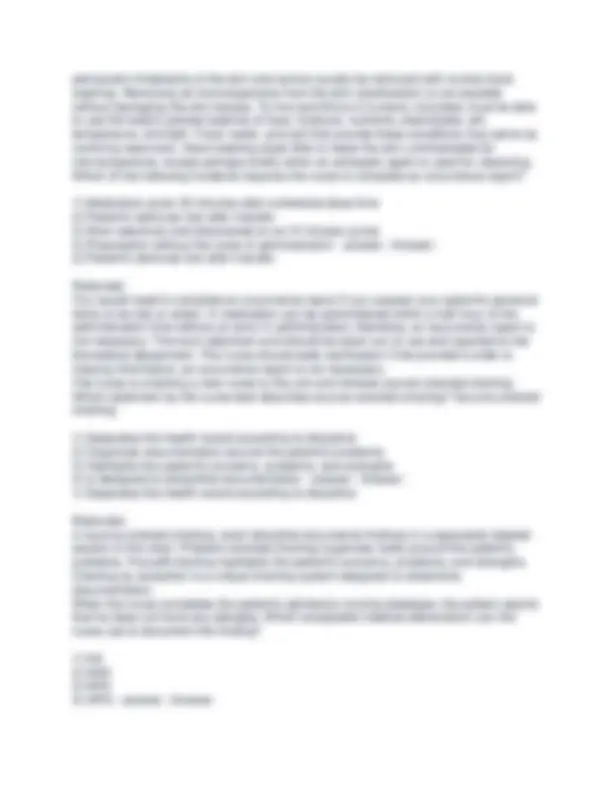
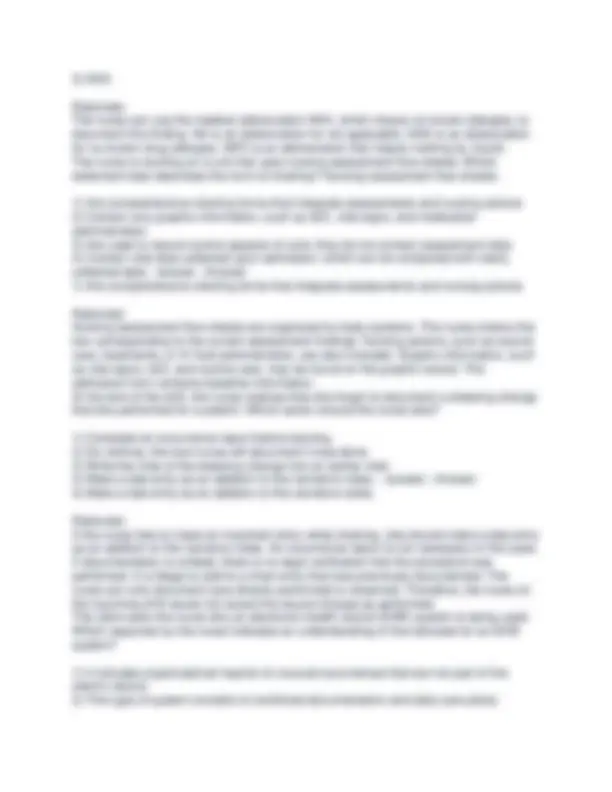
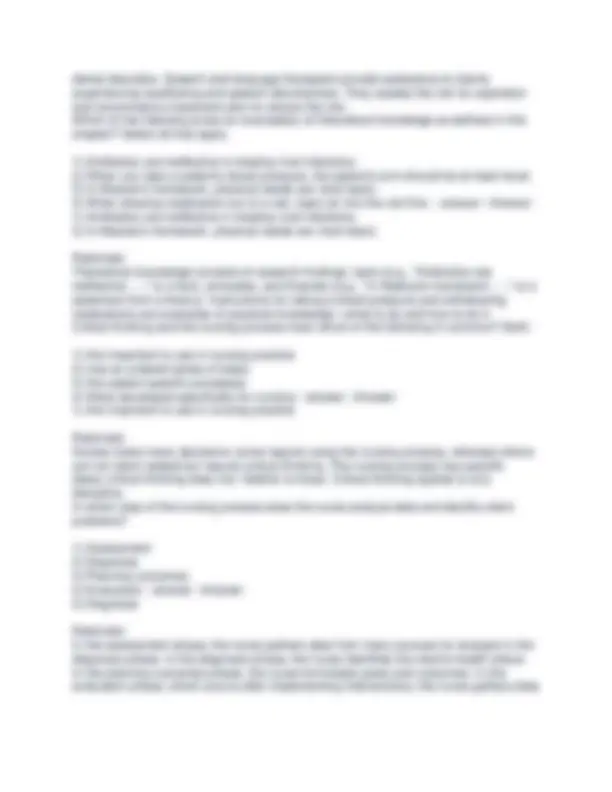
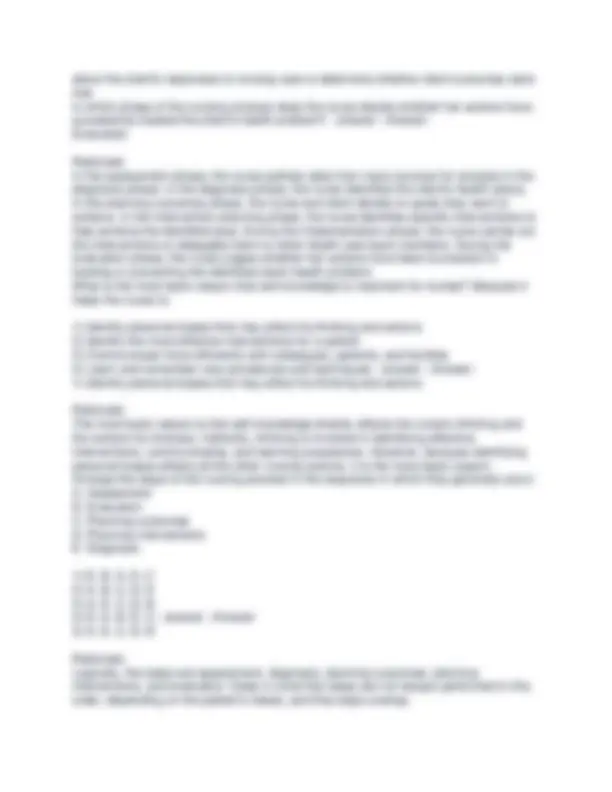
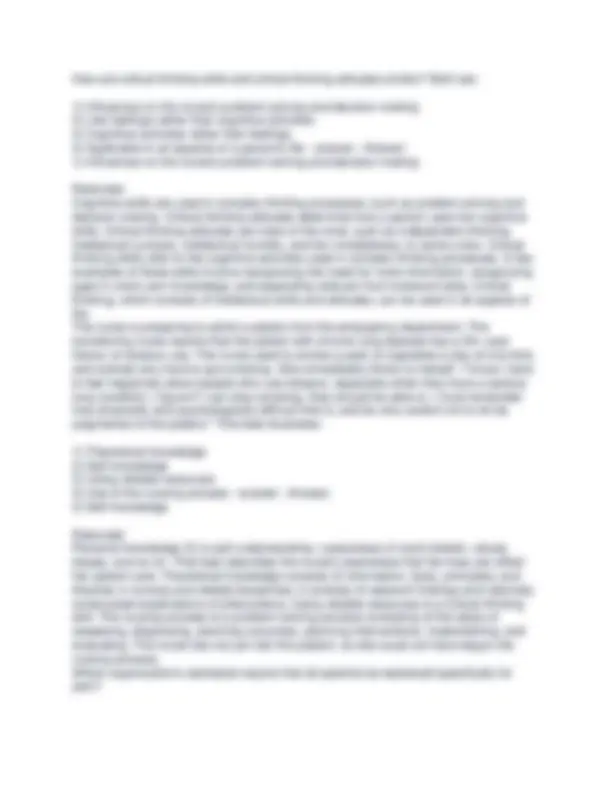
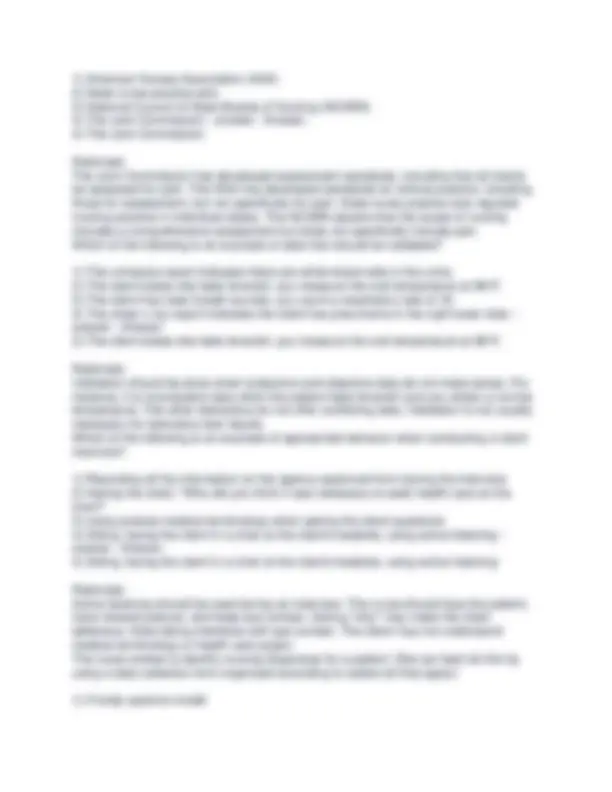
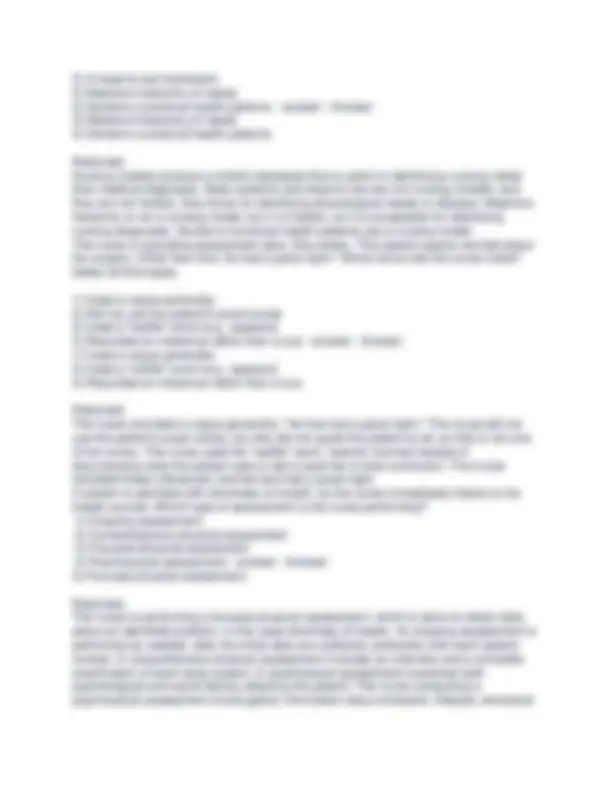
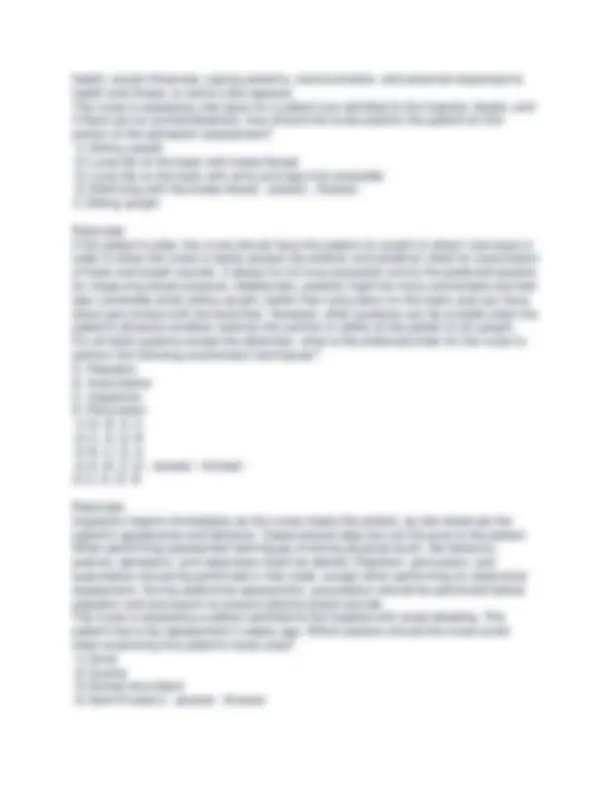
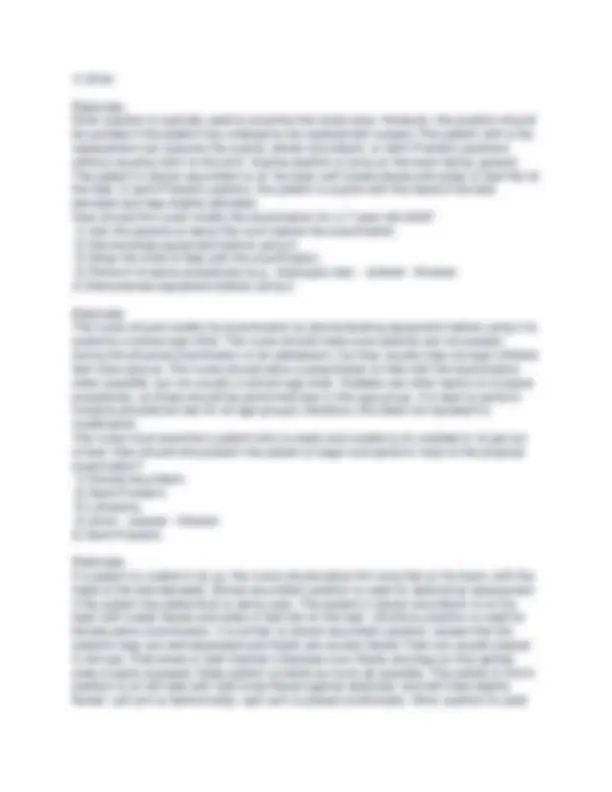
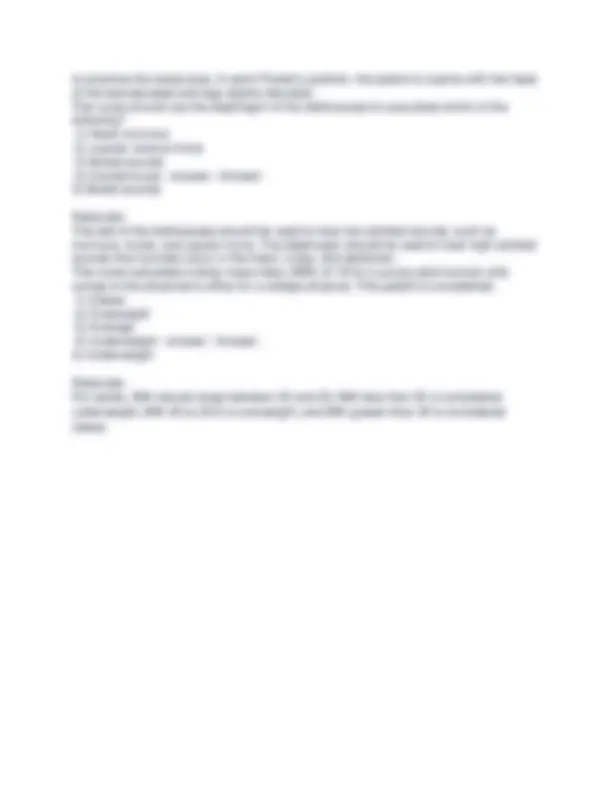


Study with the several resources on Docsity

Earn points by helping other students or get them with a premium plan


Prepare for your exams
Study with the several resources on Docsity

Earn points to download
Earn points by helping other students or get them with a premium plan
Community
Ask the community for help and clear up your study doubts
Discover the best universities in your country according to Docsity users
Free resources
Download our free guides on studying techniques, anxiety management strategies, and thesis advice from Docsity tutors
Nclex questions for Fundamentals of Nursing with rationale
Typology: Exams
1 / 25

This page cannot be seen from the preview
Don't miss anything!


















A 73-year-old patient who sustained a right hip fracture in a fall requests pain medication from the nurse. Based on his injury, which type of pain is this patient most likely experiencing?
should also use acetaminophen cautiously. Those allergic to aspirin or other nonsteroidal anti-inflammatory drugs (NSAIDs) can use acetaminophen safely. Acetaminophen rarely causes gastrointestinal (GI) problems; therefore, it can be used for those with a history of gastric irritation and bleeding. Which action should the nurse take before administering morphine 4.0 mg intravenously to a patient complaining of incisional pain?
Rationale: The BP change is abnormal; a BP change greater than 10 mm Hg may indicate postural hypotension. The change in heart rate is abnormal; heart rate usually increases slightly after eating rather than decreasing. The temperatures are within normal range for the rectal route, and temperature increases throughout the day. It is normal to have an increased respiratory rate after exercise. The nurse assesses clients' breath sounds. Which one requires immediate medical attention? A client who has:
phase, the nurse gathers information about the patient before she meets him. Discussion of personal information, particularly if sensitive or complex, is suitable for the working phase of the nurse-patient interaction. The patient expressing feelings and concerns also occurs during the working phase. During the working phase, care is communicated, thoughts and feelings are expressed, and honest verbal and nonverbal communication occurs. Stating expectations related to discharge is most appropriate for the termination phase—the conclusion of the relationship. A local church organizes a group for people who are having difficulty coping with the death of a loved one. Which type of group has been organized?
Dehydration places the patient at risk for impaired skin integrity. Dehydration, caused by fluid volume deficit, causes the skin to become dry and crack easily, impairing skin integrity. People who are very thin or very obese are more likely to experience impaired skin integrity. This patient is of normal height and weight; therefore, his body stature does not place him at risk. There is nothing to suggest that this patient has an impaired nutritional status. The nurse notes a lesion that appears to be caused by tissue compression on the right hip of a patient who suffered a stroke 5 days ago. How should the nurse document this finding?
Rationale: The client with unstable diabetes mellitus can safely be paired in a client-care assignment because the client is free from infection. Perforation of the bowel exposes the client to infection requiring antibiotic therapy during the postoperative period. Therefore, this client should not be paired with a client in protective isolation. A client in protective isolation should not be paired with a client who has an open wound, such as a stage 3 pressure ulcer, or with a client who has a urinary tract infection. Which action demonstrates a break in sterile technique?
permanent inhabitants of the skin and cannot usually be removed with routine hand washing. Removing all microorganisms from the skin (sterilization) is not possible without damaging the skin tissues. To live and thrive in humans, microbes must be able to use the body's precise balance of food, moisture, nutrients, electrolytes, pH, temperature, and light. Food, water, and soil that provide these conditions may serve as nonliving reservoirs. Hand washing does little to make the skin uninhabitable for microorganisms, except perhaps briefly when an antiseptic agent is used for cleansing. Which of the following incidents requires the nurse to complete an occurrence report?
about the client's responses to nursing care to determine whether client outcomes were met. In which phase of the nursing process does the nurse decide whether her actions have successfully treated the client's health problem? - answer : Answer: Evaluation Rationale: In the assessment phase, the nurse gathers data from many sources for analysis in the diagnosis phase. In the diagnosis phase, the nurse identifies the client's health status. In the planning outcomes phase, the nurse and client decide on goals they want to achieve. In the intervention planning phase, the nurse identifies specific interventions to help achieve the identified goal. During the implementation phase, the nurse carries out the interventions or delegates them to other health care team members. During the evaluation phase, the nurse judges whether her actions have been successful in treating or preventing the identified client health problem. What is the most basic reason that self-knowledge is important for nurses? Because it helps the nurse to:
How are critical thinking skills and critical thinking attitudes similar? Both are: